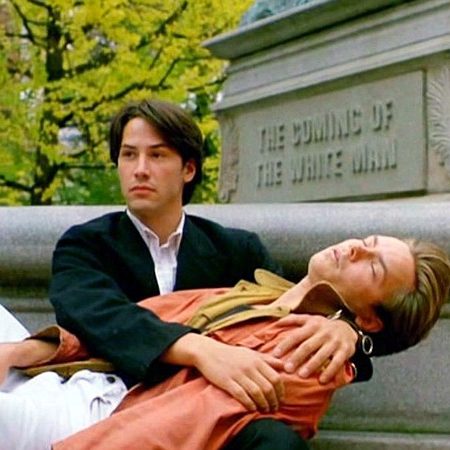Devotees might insist on 1993’s You Need a Mess of Help to Stand Alone, collecting their early nineties singles and B-sides, including essentials like “Paper” and “Some Place Else”; they’ll also get infuriated by the exclusion of Tiger Bay, to my ears a botch in its American edition; and of debut Foxbase Alpha, home of “People Get Real,” in which Bob Stanley and Pete Wiggs assemble their sound into some kind of shape.
1. Travel Edition: 1990-2005
Treating Neil Young as an excuse for tracking shufflebeat, a stiff house keyboard, and a spacey contribution by Moira Lambert (and scoring a #1 American dance hit, their biggest on any chart in this country), Saint Etienne showed listeners that they would treat their record collections as opportunities, to quote a later song, to stop and think it over. Then Cracknell joined Stanley and Wiggs, and they were off, releasing albums replete with samples from the British TV and film industry over the airiest of beats. This is the place to get Tiger Bay‘s “Like a Motorway” and “Hug My Soul.” Delighted with ephemera, the trio realize the single is their natural medium. Over the course of eighteen tracks with not a misstep Saint Etienne made Oasis look like buffoons; their winking anonymity served as an antidote to a laddish time. Knocked down a notch for omitting “Who Do You Think You Are,” a cover of a Candlewick Green number that is the trio’s most fetching performance, ever. Discography, Chronicle, Timeless: The Singles Collection, The Whole Story — Travel Edition: 1990-2005 belongs among them.
2. So Tough (1991)
Jump the morgue. Kiss the future. You know crew cuts and trainers are out again. Like the angel of history of Walter Benjamin’s devising, Saint Etienne’s characters move forward while looking fixedly at the past. “Conchita Martinez” puts the theory to the test: every time the track starts as a fairly standard early nineties pop house track it stops for a sample of Rush’s “Spirit of Radio.” The freshness of the boys’ keyboard arrangements keep the axes of “Mario’s Cafe” and “Calico” spinning and spinning (I named an early short story “Mario’s Cafe”). The atmosphere on “Hobart Paving,” Cracknell’s best ballad performance to date, is palpably grey. The peak is the protean soundscape “Avenue,” dub in its step, classical in its allusions.
3. Words and Music by Saint Etienne (2012)
Suddenly, during an American election year, they mattered again. Simultaneity is their mode: a nostalgia for the rush that referents from pop culture past undergirds a commitment to the latest technology. Rediscovery as a way of looking ahead. With “DJ and “Tonight,” a diptych as ruminative and beatwise as anything by Tennant-Lowe, and lesser ones like “Last Days of Disco” and “I Threw It Away,” they make, as I wrote that year, a persuasive case for the exploitation of myth and memory. Why wallow? The creamy wanness with which their post-1998 albums are suffused dissolves.
4. Good Humour (1998)
For their fourth album, Saint Etienne hired Cardigans producer Tore Johansson to crunch up their arrangements with a full band; his mix helps Cracknell, who brings a warmth and presence. The soft rock vibe is of its time: think Ivy, Air, and the lounge act revival. “Lose That Girl” boasts one of the trios more fetching keyboard parts, while the bongos and wah-wah guitar on “Erica America” conjure the candy-colored fantasy land dreamed by the title character.
5. Finisterre (2002)
“Dream about the notion of the perfect city/Imagine the 19th century never happenedJ/ust a straight run from Beau Brummell to Bauhaus,” Cracknell coos over the gentlest of drum loops on the title track, as close to a manifesto as Saint Etienne deigned to record. Another gentle thing could have served the same purpose: “Stop and Think It Over,” which is like Drake recording a track called “Shut Up and Here’s Why You’re Wrong.” No longer top fifteen singles chart mainstays, Saint Etienne kept an eye on Ladytron, Fischerspooner, and their ilk; synths were cool again in pop music. The response? The stomping “New Thing.” For Cracknell, Stanley, and Wiggs, time present and time past are forever present in time future.

